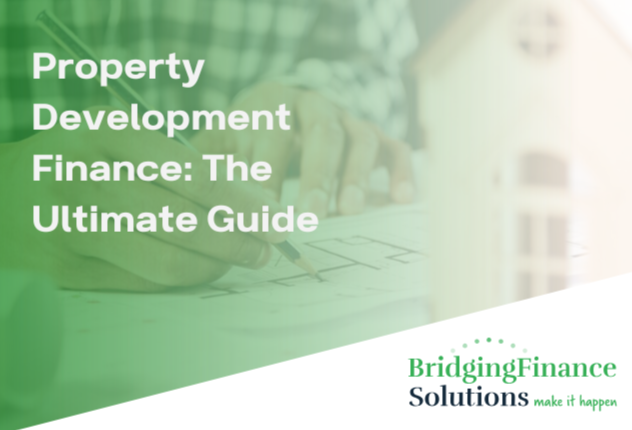Whether you’re looking to transform a tired property or build a development from the ground up, you’ll need funding, and that funding must align with the timing of your project. Many developers prefer not to apply for typical funding, as this funding often doesn’t account for the complicated nature of development projects.
A growing solution that property developers are using is development bridging loans. At Bridging Finance Solutions, we have helped countless development projects reach completion with bridging finance. In this guide, we will outline exactly how bridging loans are used for property developments and their impact on projects.
What is a Bridging Loan for Property Development?
A property bridging loan can be an excellent financing option for property development, offering a quick and flexible solution tailored to the needs of construction projects. Unlike traditional mortgages, which can take time to process, bridging loans are designed to provide fast funding, allowing you to seize opportunities as they arise.
When using a bridging loan for property development, funding is typically based on the property’s Gross Development Value (GDV), representing the expected worth upon completion. This allows you to effectively plan your finances, whether you choose to access a lump sum upfront or receive funds in tranches as your project progresses.
It’s important to note that bridging loans are usually secured against the property, so if repayments are not met, you risk losing your investment. However, when used wisely, bridging finance can provide the necessary funds to complete property development projects efficiently and effectively.

How the Bridging Loan Process Works
Before applying for a bridging loan, it is important to understand how the bridging loan process works so that you can ensure that the loan type aligns with the financial support that you need for your business and learn how to get property development finance.
Application and Assessment
The first and most crucial part of the bridging loan process is the application and assessment step. At this point, the developer applies for a loan from a lender. Within this application, you should outline the project details and your exit strategy, providing as much information as possible. The lender will then assess the information provided and decide whether or not to proceed with the investment.
Valuation and Offer
At this point, the lender will assess the property and land value based on the application that you have disclosed. The lender will also run further background checks to confirm the information that you have provided is correct.
If they are happy with your application, they will then release their offer terms, which you can choose to accept or decline.
Funding Released
The speed at which you receive your funding is down to the client having presented all the necessary information, an acceptable valuation report, and their solicitors acting quickly and efficiently when required.
Development Period
The loan given by the lender is then used to cover the development costs. Depending on your request to receive your funding, it may be possible to receive an additional cash injection during the development work.
Exit Strategy
Once the development is complete, you will need to repay your loan according to your agreed-upon exit strategy. This might be through the sale of the property, refinancing or getting a long-term mortgage. You must repay your loan as initially agreed, as this could harm your reputation in the industry.
Key Benefits of Using a Bridging Loan For Developments
Are you not sure if a bridging loan is the right choice for your project? Here are some key benefits of using a bridging loan for developments.
Speed
One of the main benefits of using a bridging loan for your development project is how quickly you can access funds. If your application is properly completed, funds can be delivered quickly and within the required timescales, unlike traditional bank funding, which can be onerous and long-winded. This allows you to begin your development work without concern about delays.

Flexibility
The flexibility of bridging loans is highly beneficial because it allows developers and property owners to adapt to varying project needs and timelines. This means they can access funds at different development stages without the constraints of rigid loan terms, enabling smoother progress and better financial management throughout the project.
Tailored Terms
The terms of every bridging loan provided by a lender are tailored to the individual receiving the loan. Each individual circumstance and lender is considered, ensuring that the lender gets the finance they need on terms that they agree with and are realistic to their individual situation.
The loans you receive are tailored to your project’s structure and the exit plan you prefer, making them a great solution if you’d like more control over your project.
Support
Bridging loan lenders genuinely care about your project’s success and want to help you meet your exit strategy. They provide ongoing support, checking that the project stays on track and that you have the necessary assistance.
Our Tips For Applying For a Property Development Bridging Loan
If you believe that property development finance is the right choice for your project, you must take the proper steps before applying. Before applying for a property development bridging loan, make sure that you have the following in order:
Prepare Your Exit Strategy
Before a lender will consider your loan, they need to know that you have an exit strategy in place so that they can be sure that the money they provide will be repaid. Whether this is through the sale of the property or through refinancing, it’s essential to have a clear exit strategy in place.
Have Detailed Costings and Timelines
If you want to receive your loan quickly and without delay, it is essential to make a detailed account of any build costs for your project and the estimated timelines so that the lender has a full scope of your project.

This information will not only help a lender determine whether the project is worth investing in but also help the lender put together a strategy for how funds will be delivered.
Get a Professional Valuation
A professional valuation will be undertaken by the lender. A valuation verifies the market value of the new property and ensures the loan amount matches what the lender is securing. Without it, the lender lacks a clear understanding of the collateral, which could lead to problems later.
Work With Specialist Lenders
There are many lenders on the market, but not all of them are equipped to support your personal financial needs for your project. Working with specialist lenders means that you can carry out your development with the security that you are being supported by a team that understands your development and can ensure that your project runs smoothly in terms of financial backing.
Start Your Development With Bridging Finance Solutions
This guide should help you understand how bridging loans can be a fantastic asset when developing a property and the steps you should follow before applying for one.
At Bridging Finance Solutions, we have helped countless developers complete their renovation projects and commercial developments with our financial backing, and we have the experience to support new projects.
Whether you’re looking for commercial bridging loans or construction finance, we can help. If you need development finance support with your project, contact our team today and find out how you can make it happen with Bridging Finance Solutions. Our streamlined application process and competitive interest rates make us a top choice in the bridging finance market.




